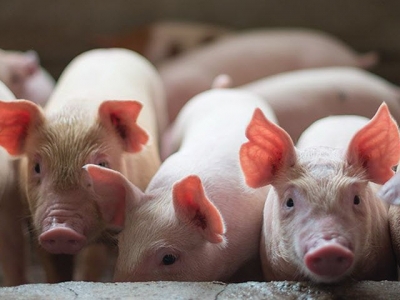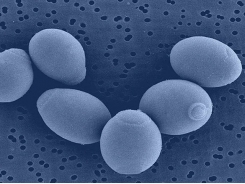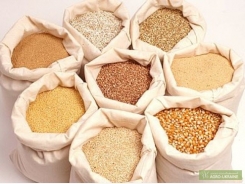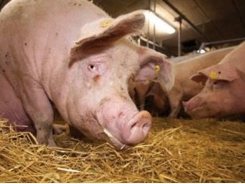6 basic feed ingredients in antibiotic-free piglet diets

Feeding piglets has been always a challenge, the more so now that in-feed antibiotics are increasingly removed from the array of useful ingredients. Photo: Voratham Yuangngoen | Dreamstime
Formulating a piglet diet with antibiotics is a rather easy task, at least for most nutritionists, and it gets easier as piglet weaning age increases. But, with early weaning (up to 28 days of age) still being popular, and the need to remove or reduce antibiotics and other antimicrobial compounds from modern piglet feeds a constant pressure worldwide, we must consider the immature digestive system in conjunction with a highly unstable/developing gut microbiota profile. Doing otherwise, we risk the danger of having poor growth performance or offsetting pathogenic diarrheas — both undesirable under any circumstances.
The issue of ingredient cost — and eventually quality of the final feed — is one that should not escape our attention at any time. It is possible to create the best feed around, but impossible to sell it in a market attuned to low-cost production methods. A balance is required between ingredient cost, quality and expectations in the field. Obviously, designing a medium-cost diet and marketing it as a top-notch feed is far away from the golden rule of “under-promising and over-delivering.” Lamentably, the opposite of this golden rule is quite often the norm, and it does not help when technical staff become disoriented as to what is expected of them when it comes to product design.
A balance is required between ingredient cost, quality and expectations in the field.
When sitting down to design a new piglet feed — the first feed to be fed to piglets after weaning (or as a creep feed during suckling) — one is faced with a most daunting challenge. Adding too many ingredients (raw materials or additives) is clearly counterproductive (too taxing for the business of selling feeds and the animal); doing the opposite is tempting, but perhaps something will be omitted and the product will not succeed. Unlike feeds for older animals, designing a diet for a piglet (or any other similarly sensitive feed for very young animals) does not follow exact, cookie-cutter, methods. There are not many secrets, indeed; but it does require acute judgement, considerable experience, and above all, an eye for balancing the many variables present. I will not fall into the trap of using the cliché of this job being more of an art than science, because it is a highly scientific task (I spent 10 years studying it, and it was not in art school!), but it remains a science that involves many difficult decisions — and this is why only a handful of nutritionists worldwide can design a successful commercial piglet diet that balances cost/profitability, animal performance and health, and marketing attractiveness.
To begin with the business of designing such a product, one can focus on six basic ingredients (raw materials and additives) that I consider worth exploring, regardless of final feed cost and/or quality level attained. There are many variations within each ingredient, and indeed, a whole article could be written about each one. In brief, here are my thoughts on these six pillars of piglet feed design, in terms of raw materials:
1. Oats
Perhaps the most expensive cereal, especially because they must be decorticated and steamrolled (cooked). They are called oat groats in the U.S., but they are more widely known under the brand name “Quaker” elsewhere, as they are more or less the same ingredient — minus the strict quality control for oats destined to human nutrition. Such oats have been used traditionally to reduce the onset of diarrheas post-weaning, and some consider them indispensable even for palatability. Their cost is rather prohibitive, except for the highest quality products; otherwise, they can be used freely.
2. Soy protein
A much-discussed protein source, soya beans offer one of the most versatile animal feed ingredients. Soy protein in soybean meal is the least desirable, yet the most economical sensible ingredient to use, but it contains too many anti-nutritional factors, and it even causes an allergenic reaction. There are other forms, such as soy protein concentrate, soy protein isolate, enzymatically-treated soy protein, microbially treated soy meal, hydrolyzed soy protein and even fermented soy meal. All have their negative and positive points, and some are not even much better than plain soybean meal of good quality. But using a high quality product will ensure piglets receive a high-protein diet without the risk of having an allergic reaction that causes gut damage and diarrhea. Using the right soy protein source can eliminate the need for any other protein supplementation, including animal proteins.
3. Simple sugars
Lactose, sucrose and maltodextrin are the most widely used simple sugars, and they can be used freely to replace one another, although a mixture works perhaps better. Piglets do not have a lactose requirement per se; they rather require sugars that are simple enough to digest, and for that, starch is not the ideal energy source (albeit the least expensive one). Lamentably, cooked starch cannot replace the need for simple sugars, even though it is much better digested than raw starch. The exact level of simple sugars is often dictated by the upper cost constraint for overall feed price, and in turn, it defines feed intake potential for such feed. It is widely known that piglets respond linearly to lactose concentration in their feeds — at least in the first couple weeks post-weaning. In contrast, prolonging feeding high levels of simple sugars will invariably lead to osmotic diarrheas, as such ingredients are known laxatives.
4. Immunoglobulins
Once, dried whey was the only source of any immunoglobulin in piglet diets. Then animal plasma was discovered, and it was the ingredient that proved beyond any diet the need to consider immunoglobulins in piglet feed design. Animal plasma is still being used in many countries, but less expensive alternative sources of immunoglobulins have been produced in the form of egg immunoglobulins. There are positive and negatives, as always with all ingredients, but cost remains — in my opinion — the defining challenge when it comes to choose between animal plasma and egg immunoglobulins. Research has proven that piglets respond favorably to much higher levels of immunoglobulins than those used today commercially, but piglet feed buyers tend to react very negatively when they are faced with the ensuing price of such highly effective feeds.
5. Zinc and copper
Zinc oxide and copper sulphate were traditional ingredients used to control post-weaning diarrheas and even promote growth performance in relatively healthy pigs. Up to 3,000 ppm Zn from zinc oxide and up to 250 ppm Cu from copper sulphate were used in piglet feeds during the first couple weeks post-weaning, but such levels are no longer permissible in many countries for a number of reasons. Modern alternatives in the form of potentiated (higher surface) zinc or hydroxylated zinc and copper salts, and even a new form of copper oxide that is highly bioavailable, have been shown to offer a solution as they can be used at lower levels with broadly similar results in terms of animal performance. In contrast, organic zinc and copper forms still struggle to find their right position in the market as inorganic products appear to be more potent — and less costly.
6. Fiber
The first thing considered when antibiotics were removed from feeds was adding more fiber. This worked in controlling diarrheas, but it also depressed feed intake. When other means of controlling diarrheas were applied, the role of fiber was soon forgotten, but this ingredient (or nutrient) remains a must for any such diet. Using the right source (purified or concentrated) avoids the problem of reduced feed intake, helps develop a healthy microflora, and enables the digestive tract to mature better and faster. After all, pigs evolved to consume a high-fiber diet in nature, and depriving them from such opportunity only hampers their natural growth. In my opinion, a right blend of fermentable and insoluble fibers should be supplemented by an appropriate strain(s) of probiotics to give the developing microflora a strong boost. Finding the right combination remains one of those educated guesses for which piglet feed design is often considered an art.
In brief, designing a piglet feed is nothing more than a balance between cost, expectations in terms of animal performance and health, and available ingredients. The information is out there, but the combination into a marketable product remains outside the scope or reach of universities, even at MSc or even Ph.D. levels. As such, piglet feeds — the successful ones — remain few and well-known worldwide, even though the majority of pig producers are attracted by the less expensive — and less effective — products.
Related news
Tools

Phối trộn thức ăn chăn nuôi

Pha dung dịch thủy canh

Định mức cho tôm ăn

Phối trộn phân bón NPK

Xác định tỷ lệ tôm sống

Chuyển đổi đơn vị phân bón

Xác định công suất sục khí

Chuyển đổi đơn vị tôm

Tính diện tích nhà kính

Tính thể tích ao




 S. suis vaccine project moves forward
S. suis vaccine project moves forward  Reduced antibiotic consumption in Danish pig production yields…
Reduced antibiotic consumption in Danish pig production yields…